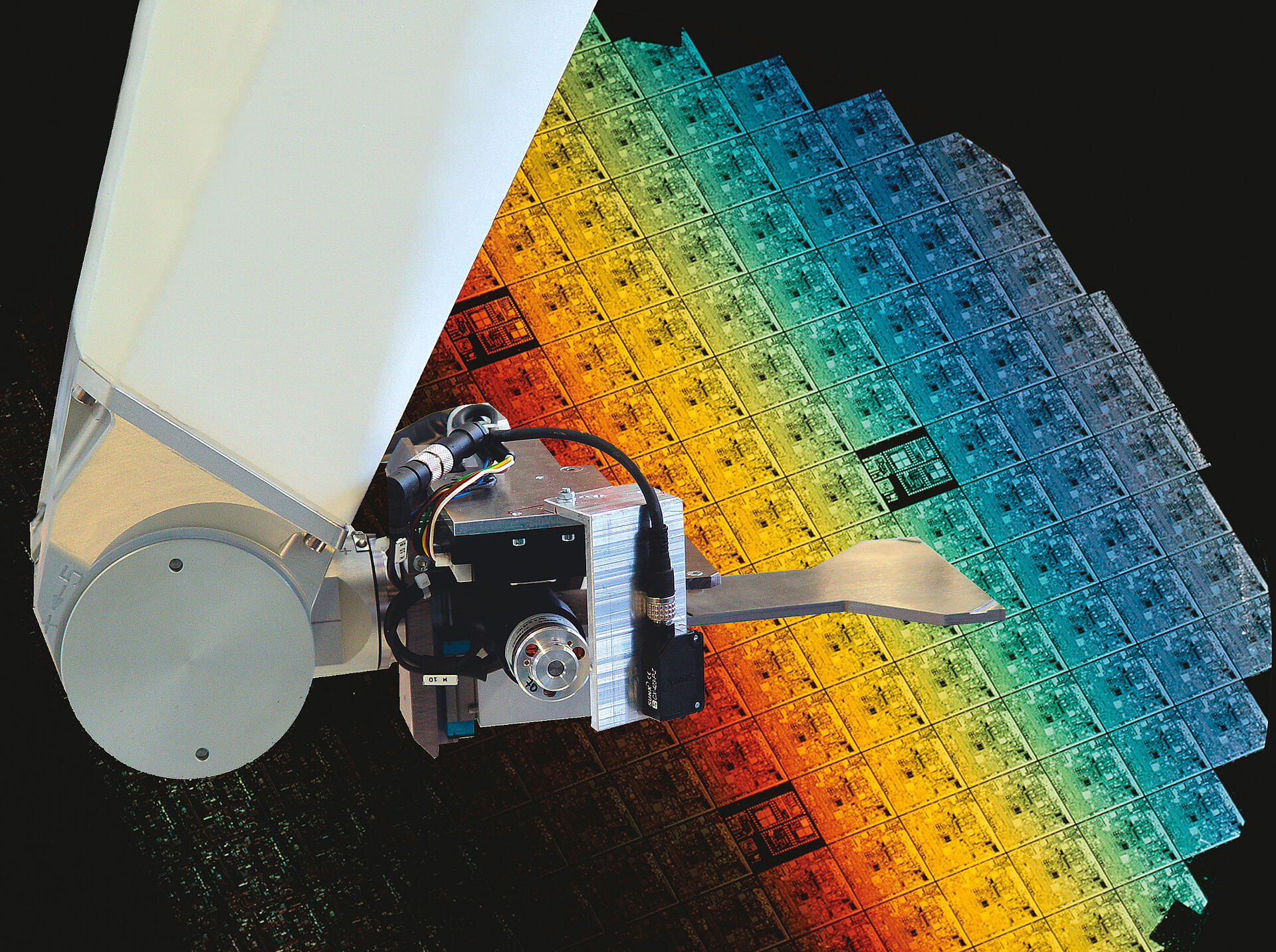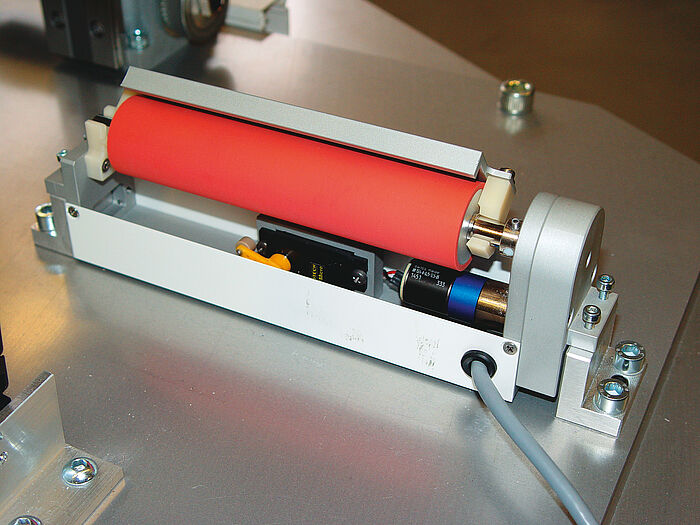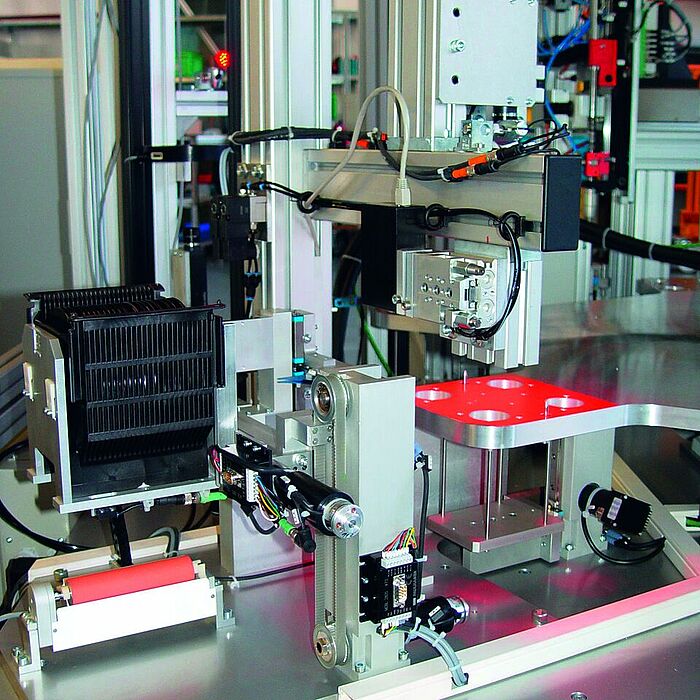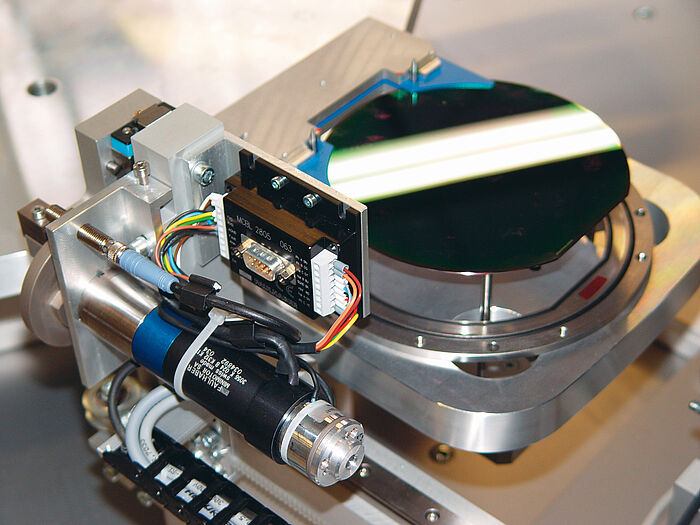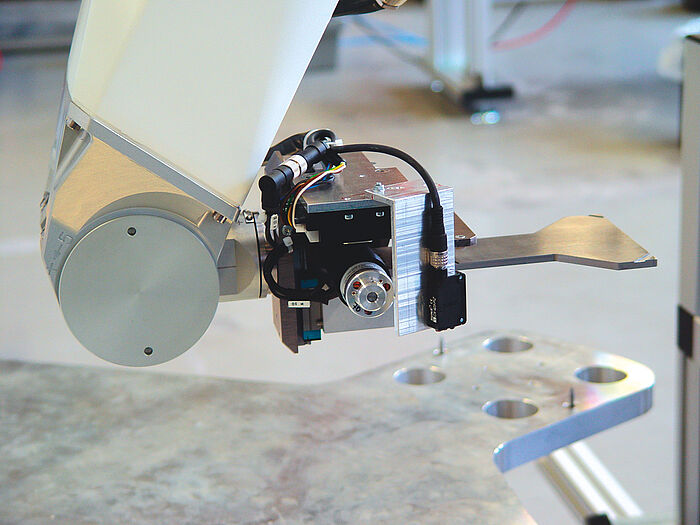Today, sensor elements are required in bulk quantities. Cost-effective fabrication is possible only if the fabrication process is more or less fully automated. Many of these mass products are deployed as safety-critical processes, e.g. as ABS sensors, acceleration sensors and others. Hence, quality always has top priority. Until recently, the silicon wafer was manually placed into a carrier and clamped. Only wafers that are accurately positioned can be etched in the subsequent fabrication process. As the wafers already have considerable value at this stage of the manufacturing process, they must be handled with extreme care. Round-the-clock shift operation adds to the overall cost of production.
Quality reigns supreme
Committed to excellence, INGENIA, a handling system expert in electronic production, has developed an automated assembly system designed specially for chip fabrication. In order to address the key issues facing customized manufacturing processes, INGENIA’s product offering has been tailored to the specific requirements of its clients. The demands on handling systems are enormous: in addition to meeting the challenge of three-shift operation, the equipment deployed also has to guarantee safety and exact positioning on a long-term basis. To etch the expensive silicon wafer optimally, it is important that the wafer be inserted into the holder with the utmost precision and then clamped for further processing.
And the demands on handling become even more challenging if sensors or micro-mechanical chips are being fabricated instead of standard ICs. Here, in contrast to the usual memory chips or CPUs, the wafer is processed on both sides. This is the only way of optimally combining the intricate structure of the mechanical elements with the necessary electronics. As there are no handling experts and drive specialists involved in the fabrication plant, the installation and maintenance of the system and its drives must be kept as simple as possible. The objective is to ensure that readjustments and optimization can be undertaken while the system is in operation, or that the system can be started up again after interruptions. Moreover, simple handling is also designed to reduce the operating costs of a system.
Safe insertion
As is the case in every field of automation, the principle of designing highly versatile and adaptable production equipment is of paramount importance. A mix of standard components and special solutions enables optimal handling. The device itself is responsible for handling the full range of processes, from arranging the wafers through mounting the carrier frame right up to transferring the mounted frame. All assembly steps are executed at one level.
There are robot arms for inserting the wafers and storing the wafer inserted in the box. To be able to guarantee safety and exact positioning, as well as CE conformity during power failure, motors with integrated brakes are used in these business-critical machine components. The high basic cycle, as is standard in electronics manufacturing, calls for drives with strong performance and torque. In spite of the high level of dynamics, the positioning must be perfect at all times. The actual process of aligning and clamping the wafer in the holder does not require excessive power, but it is just as critical during the positioning phase. After all, the wafer must lie exactly in the center in order to ensure that as much of the surface as possible is utilized. Finally, the screws of the frame must not only be inserted exactly at the right position, they must also be turned identically so that deviations caused by frame displacement or screw heads that do not sit squarely can be avoided.
Flexible drives
INGENIA uses wear-resistant electronically commutated DC motors in order to meet these demanding requirements. The EC motors developed by the micromotor specialist FAULHABER are the perfect solution, boasting an extensive range of control and gearbox technology. Motors of the 3056 Production Series are ideal for machine components with above-average speed and torque requirements. At a mere 30 mm diameter and 56 mm length, these miniature drives develop a continuous torque of up to 21.5 mNm (stall torque up to 100mNm), at an output power of 49 W. The micromotors are available for supply voltages of 12, 24, 36 or 48 VDC. The speed can be adapted by deploying optional gearheads of the 30/1 or 38/1 Series. The dynamic little powerhouse can be controlled through the micromotor’s analog Hall sensors and MCBL 2805 motion controller, which has been tailored specifically to this state-of-the-art range. The larger motors of the 3564 Type Series can optionally be deployed with integrated motion controllers. This enables a very compact drive of 35 mm diameter and 83 mm total length – including the controller. Despite this compact size, the EC micromotor achieves a power output of 70 W and a peak torque of 160 mNm (continuous torque 50 mNm). Here too, matching gearheads are available to adjust the speed and torque in line with requirements.
In the 3564 K 024 BC model, the electronically commutated servomotor integrates a high-resolution encoder and a programmable motion controller with the help of a high-performance 16-bit controller. Velocity regulation from 10 to 10,000 rpm, velocity profiles such as ramping, triangular, trapezoidal or positioning movements with resolutions up to 1/1000 revolutions are possible. Reference marks and limit switches can also be checked. A self-protection against excess temperature, overloading or excessive voltage during generator operation is integrated. In addition to autonomous deployment, an RS232 interface also enables externally controlled usage. Several motors can operate on one interface by means of addressing. A multiplexer board is available for this purpose.
The interaction of flexible drive concepts and pioneering system solutions also provide a solid foundation for reduced production costs in electronic fabrication, while simultaneously improving manufacturing quality. State-of-the-art drive solutions ensure fast and safe handling at all times.
